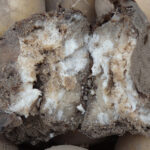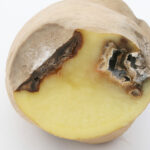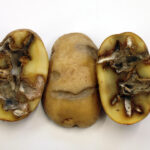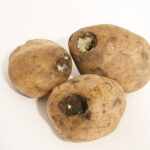Polish name: Gangrena ziemniaka
English name: Gangrene
EPPO code: PHOMEF
Perpetrators of the disease:
- Mushrooms Phoma exiqua var. foveata (quarantine object) or Phoma exigua var. exigua
Gallery
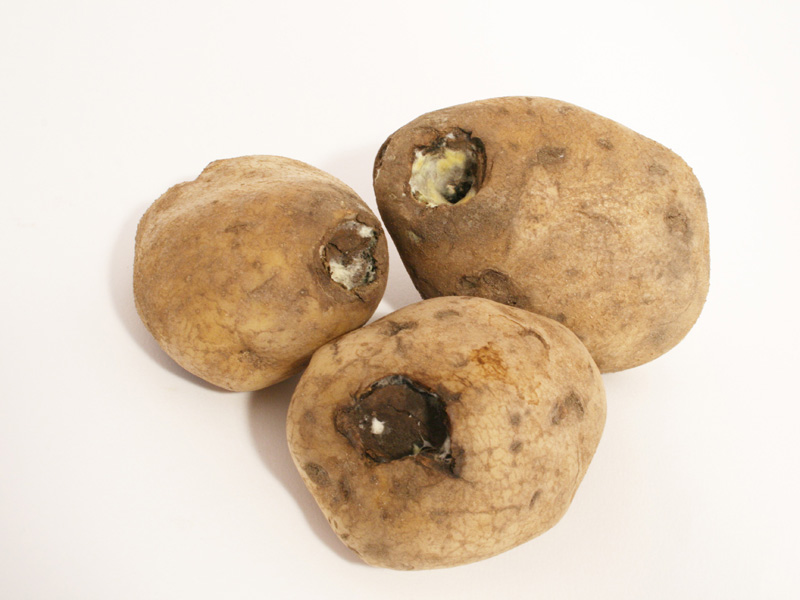
Potato gangrene thumbprint characteristic symptom on the tuber
(fot. S. Wróbel)
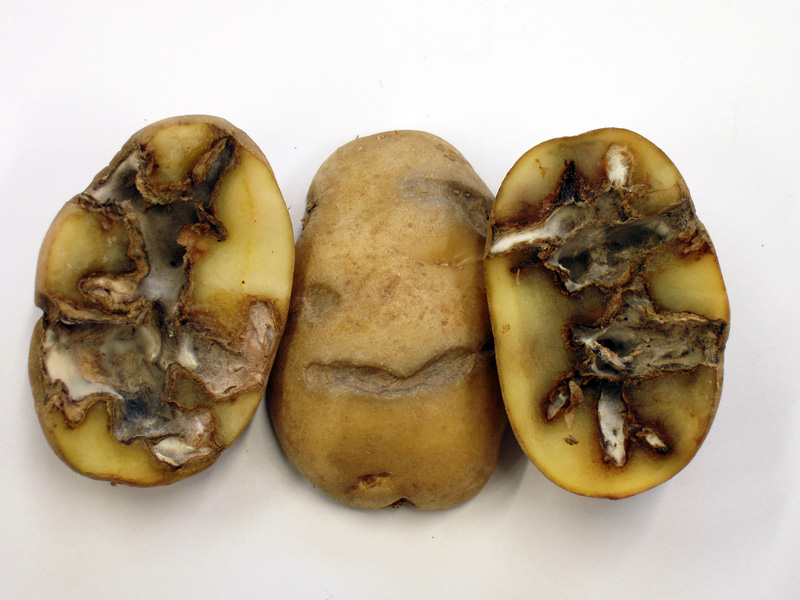
Potato gangrene. Disease symptoms on the tuber cross-section
(fot. J. Osowski)
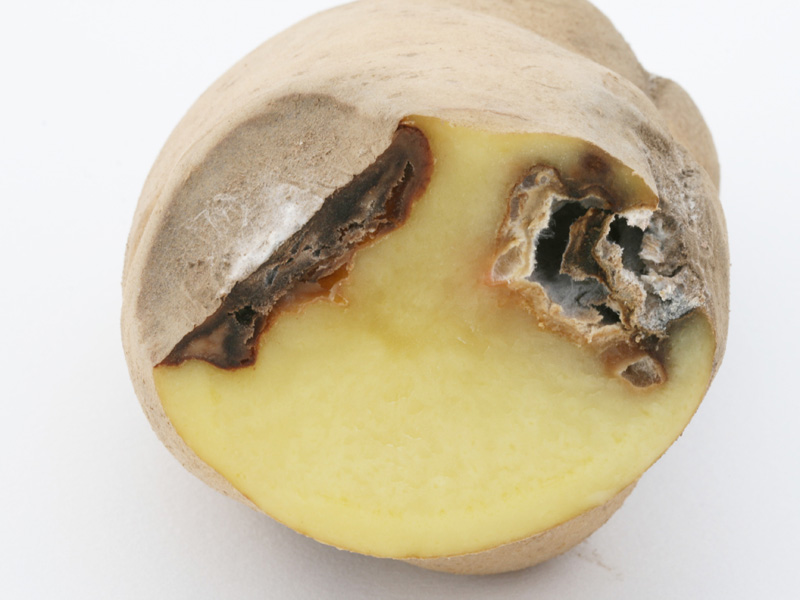
Zgorzel ziemniaczana. Objawy chorobowe na przekroju bulwy
(fot. S Wróbel)
- Sucha zgnilizna. Całkowicie zniszczona bulwa (fot. J. Osowski)
- Gangrena ziemniaka. Zgnilizna wewnętrzna. Charakterystyczne piknidy sprawcy (fot. J. Osowski)
- Gangrena ziemniaka. Objawy choroby na przekroju bulwy (fot. S. Wróbel)
- Gangrena ziemniaka. Objawy choroby na przekroju bulwy (fot. J. Osowski)
- Gangrena ziemniaka odcisk kciuka charakterystyczny objaw na bulwie (fot. S. Wróbel)
Characteristics and description of the disease
Brown spots appear at the base of the stem, which may spread to the tip during flowering. These spots are usually located above the lateral branching of the stems and petioles. As the disease progresses, these spots dry up and collapse, and fungal pycnidia may appear on their surface (fruiting bodies of the conidial stage, in which conidial spores mature, unable to infect plants in remote plantations). On the bush (plant), not all stems are infected. The leaves on the bottom of the stem turn yellow and fall off, and the stem breaks at the site of infection.
The first visible symptoms on tubers appear after about 2 months of storage. They are small (1-2 mm in diameter), dark spots that grow larger as they grow, blend together and form light depressions in the flesh, resembling dimples or a thumbprint (photo 1). Some of the resulting spots do not develop further, but shrink and can be easily removed from the flesh. Larger spots, which can sometimes cover all or a large part of the tuber, are irregularly outlined and sometimes wrinkled, in contrast to dry rot, where there are more concentric spots and the formation of mycelial pads of different colors (white, pinkish-white, purple-blue) (photo 2). The size of the outer spot does not always correspond to the rot that develops inside the tuber. The rot developing inside the tuber sometimes covers almost the entire tuber (photos 3A, 3B). The cavities that form are covered with mycelium of various colors (gray, dark brown to purple), in which pycnides can be found (Photo 4).
The color of the rotting flesh is also a characteristic feature that allows to distinguish gangrene from dry rot. In infection caused by gangrene, the rotting flesh is salmon-pink in color, turning to orange, and finally purple-gray, while in the case of dry rot, the flesh is beige from light to dark shade (Fig. 5). Moreover, the edges of the spots of dry rot are rather blurred, while in gangrene, the rot is separated from the healthy tissue by a layer of browned cells, below which a zone of vitreous flesh is visible (Photo 3A). Larger and more extensive internal damage occurs at higher storage temperatures, while shallower, especially skin necrosis – at lower temperatures.
Occurrence and harmfulness
It is common in areas where potatoes are grown, especially where intensive cultivation is carried out. Yield losses caused by gangrene development can reach up to 20%, especially when strongly (over 60%) infected tubers were used for planting. Disease development is favored by moist soils, and plants are most often infected at temperatures below 10 ° C.
Prevention
- Early destruction of tops and harvesting in favorable weather conditions.
- Minimizing mechanical damage to tubers, removing and destroying tubers with symptoms of disease.
- Growing potatoes after a 3-4-year break. 4. Using healthy, certified seed potatoes.
- Appropriate preparation of tubers for long-term storage (drying of the tuber skin, sorting the tubers with symptoms of disease and damaged tubers, healing of wounds and corking of the epidermis).
- I used the autumn treatment of tubers 5 to 10 days after harvesting.
Compiled by: dr inż. Jerzy Osowski

